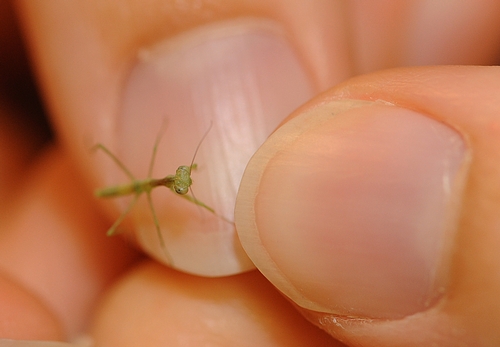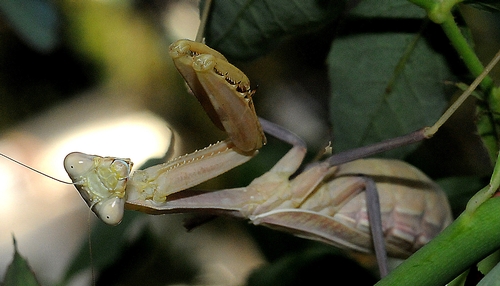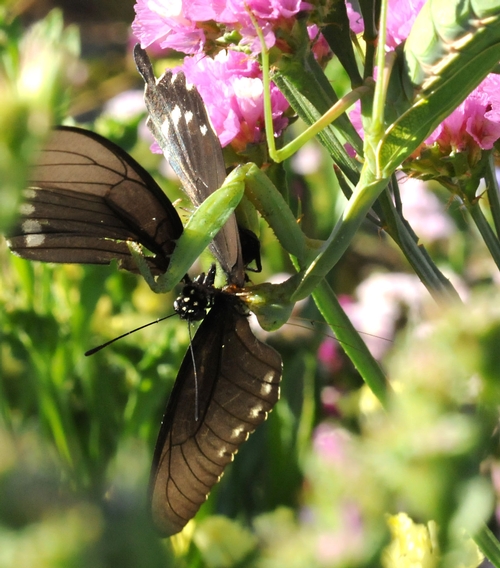
Some of the bugs you'll see at the UC Davis Picnic Day on Saturday, April 17 at the Bohart Museum of Entomology are "baby" praying mantises or mantids.
An egg case (here's one at right) hatched on Emily Bzdyk's desk this week.
"I came to work and there were about 200 of them on my desk," said Bzdyk, a first-year graduate student in entomology who studies with Lynn Kimsey, director of the Bohart Museum and professor and vice chair of the Department of Entomology.
Bzdyk found a home for some of them, and others will be exhibited at Picnic Day. The museum houses not only seven million insect specimens, but live ones as well (think Madagascar hissing cockroaches, Vietnamese walking sticks, spiders, tarantulas and the like).
Mantids, from the order Mantodea, are carnivorous. No vegetarian diet for them. They hide in the vegetation and snare insects such as flies, mosquitoes, butterflies, grasshoppers, blow flies, wasps, houseflies, moths, cockroaches and spiders.
When 200 or so emerge from an egg case at the same time and there's no food to eat, they eat one another.
Goodbye, brother. Goodbye, sister.
As adults, even the mating game can turn deadly. After they mate, the female sees her lover as protein--protein to develop her eggs.
Goodbye, mate.
"Praying mantises lurk among vegetation, where they are well camouflaged, and seize insects when they come near," say Charley Eiseman and Noah Charney in their newly published book, "Tracks and Sign of Insects and Other Invertebrates: A Guide to North American Species" (Stackpole Books).
"When they catch a butterfly or grasshopper they consume everything except the wings," they write.
The mantids "sometimes prey on small frogs and lizards, and one was observed clutching a short-tail shrew."
If you look on You Tube, you'll see them attacking even larger prey, such hummingbirds.
And eating them.
Goodbye, birdies.
Attached Images:

Tiny Praying Mantis

Let Us Prey

Off with the Head